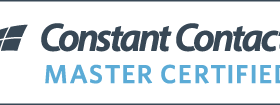Effective Marketing and Advertising
 December 27, 2021
December 27, 2021
Basic Tips for Effective Marketing and Advertising
All businesses need clients or customers—new and repeat customers
All want the highest possible return on their marketing investment
Few take all these basic steps—but the ones who do tend to get the best results so I want to review here with you today the basics for effective marketing and advertising. You already know all this—but do you implement these strategies in a coordinated way?
- Create a marketing plan. This is the master plan; advertising is part of it. Your marketing plan should contain the strategy you will use for brand recognition; the tools you will use for marketing your business; and the types of advertising you will do. Assign a budget to marketing—businesses typically spend between 5 and 10% on marketing; some spend more depending on the type of business. A good rule of thumb is to spend half the marketing budget on advertising. Note that this budget should include the cost of producing print, radio, tv or digital ads.
- Review your materials—and make sure they all belong together. When you create a marketing budget; be sure to include the graphic arts services that will be needed unless you have an in-house graphics specialist. Don’t default to the “free” graphics from the media that sell you ads unless you’re sure they will follow your exact branding instructions. In addition, you want to be sure your ads are unique and not “like the others in that media.” Marketing includes public relations, direct mail, website, email newsletters, trade shows, community events, participation in fundraisers, brochures, networking you do; and advertising which is principally done in print, on radio, on TV and on the internet. Consistency of your brand across all areas is vital to success.
- Make the plan for a year and work the plan—this stops you from making hasty decisions based on the recommendations of an adrep. Often when I talk with someone who is “looking for a way to increase business” they have just taken an ad of some kind in a way that doesn’t make sense because the adrep was good—for example, I met a business owner that took an ad in movie theaters that were about a 1 hour drive away from their office for their office-based service—how likely would that be???? But the adrep was good…
- Work the plan and resist the urge to reduce your spending when business is slow—this usually makes it slower!
- DO measure everything you do especially with regard to advertising dollars and DO make changes to spend more on what works and less on what doesn’t. Make sure you have effective measuring devices in place. Set clearly defined goals so you know what you are measuring. Don’t forget that it’s repetition, repetition, repetition that makes for successful branding, marketing and advertising. It builds awareness of your company, what you stand for, and should aid in making you the top of mind choice when the prospect has to make a buying decision.
- Think of what you do as leading people to make buying decisions (for your product or service of course) as opposed to “selling”—nobody likes a salesman but everyone likes to buy. Use your marketing to educate your prospects and turn them into buyers—they will feel more in control of the situation and tend to stay with your longer; more loyal customers
- Define your prospects as exactly as you can. Then spend your marketing and advertising dollars on reaching those specific prospects rather than the number of people you will reach. Don’t worry about the cost per thousand who will hear or see your ad; worry about the number of prospects who will see or hear your ad. Pay attention to the cost per prospect. These statistics are usually not available so you have to create your own as you monitor the results of your ads or efforts. I would rather spend $400 to reach 10 real prospects than $400 on an ad that might be seen by 40,000 people who are not my prospects but might contain some real prospects. The more focused and targeted—the better results.
- When you are going to place an advertisement; use this 4-question test for it:
- Who is my targeted market for this ad and do they really want what I am offering (note I did not say do they really need what I am offering because people are more likely to buy what they want than what they need—if you don’t believe that; how many times have you heard someone say “I went to the supermarket for milk and I spent $50 on other stuff I didn’t go there to buy)?
- Why should the reader believe my message in this ad?
- Does my product or service offer what the market would perceive as an excellent value? (remember we’re advertising so that people will take action NOW)
- Is my ad so clever that it distracts my targeted audience from my primary offer?
- Use real testimonials as often as possible. Real testimonials contain the names of real people or businesses. If possible, obtain testimonials from recognizable businesses or names—they will add more credibility to your product or service. Use testimonials to say something about your business that would be perceived as “bragging” if you said it yourself—something like “ABC Health Insurance saved us $20,000 per year on our 5-employee health insurance group! We highly recommend them to small business owners.”
- Continuing along those lines remember the old adage “facts tell but stories sell.” Use examples, testimonials and stories as much as possible. If you visit clients to do presentations in person, take testimonial letters and case studies with you. Do things that the buyer can identify with—it helps them make a good buying decision (to buy your product of course)
- Finally—review all your materials at least once a year by having them all together and viewing them as a prospect. Does everything look like it belongs together? Like it creates a consistent message? If you sell or have salespeople, do they all look and act professionally? Do you have employees who make service calls—do they observe your dress code? Are you proud of the way they represent you? With all you spend on marketing and advertising, the two worst things you can do with prospects is confuse them with inconsistent materials or disappoint them when they meet you! Be sure your materials are consistent and effective.









